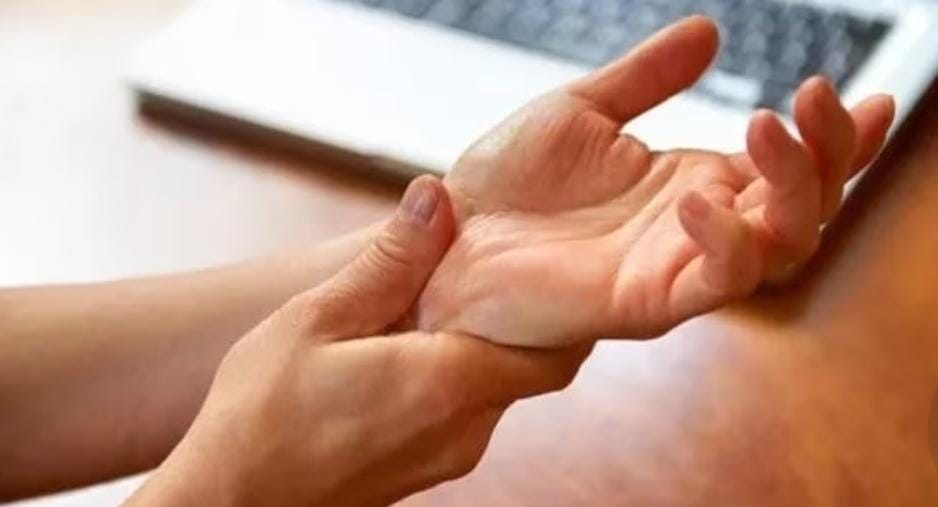
Contact Us
Online Appointments
- No exposure from potent chemicals.
- No withdrawal symptoms
- High efficacy rate
- Individualistic prescribing.
- Minimum dose.
- Rapid, gentle and permanent cure of disease.
- Holistic approach
- Painless process of treatment
- Availability of thousands of fully proved medicines on healthy human beings
- Economic medicines
Writer's Cramp
Homeopathic Treatment of Writer's Cramp
The writer's cramp is focal dystonia (state of abnormal muscle tone, resulting in muscular spasm and abnormal posture, typically due to neurological deficit) of the fingers, hand, and/or forearm.
Symptoms usually appear when a person is trying to do a task that requires fine motor movements, such as writing or playing a musical instrument. The symptoms may be isolated to only those tasks or affect the muscles in a more general way and spread to affect many tasks. Common symptoms include, for example, excessive gripping of a pen or utensil, flexing of the wrist, the elevation of the elbow, and occasional extension of a finger or fingers causing the utensil to fall from the hand.
Symptoms:
Two basic types of writer's cramp have been described:
Simple Writer’s Cramp: People with simple writer's cramp have difficulty with only one specific task. For example, if writing activates the dystonia, as soon as the individual picks up a pen--or within writing a few words, dystonic postures of the hand begin to impede the speed and accuracy of writing.
Dystonic writer’s cramp: In dystonic writer's cramp, symptoms will be present not only when the person is writing, but also when performing other activities, such as shaving, using eating utensils, applying make-up.
Common symptoms include:
- Excessive gripping of a pen or utensil
- Flexing of the wrist
- Elevation of the elbow
- Occasional extension of a finger or fingers causing the utensil to fall from the hand.
- Sometimes the disorder progresses to include the elevation of shoulders or the retraction of arm while writing.
The symptoms usually begin between the ages of 30 and 50 years old and affect both men and women. Cramping or aching of the hand is not common. Mild discomfort may occur in the fingers, wrist, or forearm.
A similar cramp may be seen in musicians as the violin is bowed, in certain athletes such as golfers, or in typists.
Cause:
Although the etiology of writer's cramp is not well known, The new studies suggest that it is a psychosomatic condition precipitate when stress is associated with excessive fine motor activity, possibly complicated by a tense or inappropriate writing technique.
The writer’s cramp may occur with no family history. Cases of inherited writer's cramp have been reported, usually in conjunction with early-onset generalized dystonia, which is associated with the DYT1 gene.
Diagnosis:
Diagnosis of writer's cramp is based on information from the individual and the physical and neurological examination. At this time, there is no test to confirm the diagnosis of writer's cramp, and in most cases, laboratory tests are normal
The hands can be affected by many conditions. Arthritis, tendon problems, and muscle cramps can all cause pain in the hands. Carpal tunnel syndrome is the result of nerve compression. Writer's cramp is often mistaken for over-use conditions. Over-use syndromes or repeated-use syndromes are usually characterized by pain, whereas a writer's cramp is more likely to cause problems with coordination. Focal hand dystonia is responsible for only about 5% of all conditions affecting the hand.
Treatment
Allopathic Treatment: Botulinum neurotoxin injection into selected muscles is helpful initially in reducing the discomfort of writer's cramp, especially when a significant deviation of the wrist or finger joints is present. This treatment is not effective for all people, significant improvement in writing and reduction of pain is seen in at least two-thirds of those persons treated but recurrence is very common.
Homeopathic Treatment: Homeopathic medicines along with psychological therapies, like counseling, CBT, behavioral therapies and Hypnotherapy have been proved significant and curative.
.


